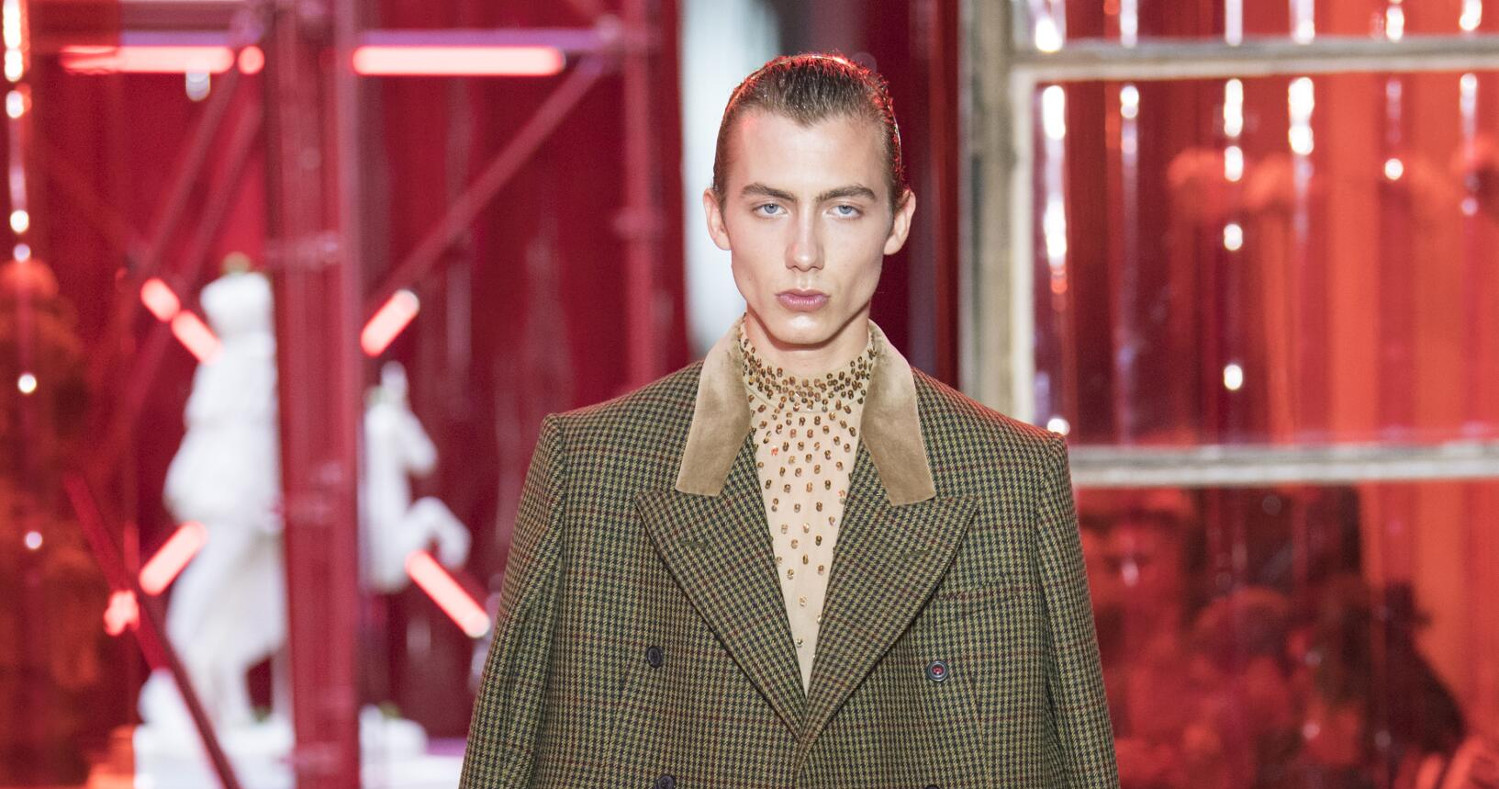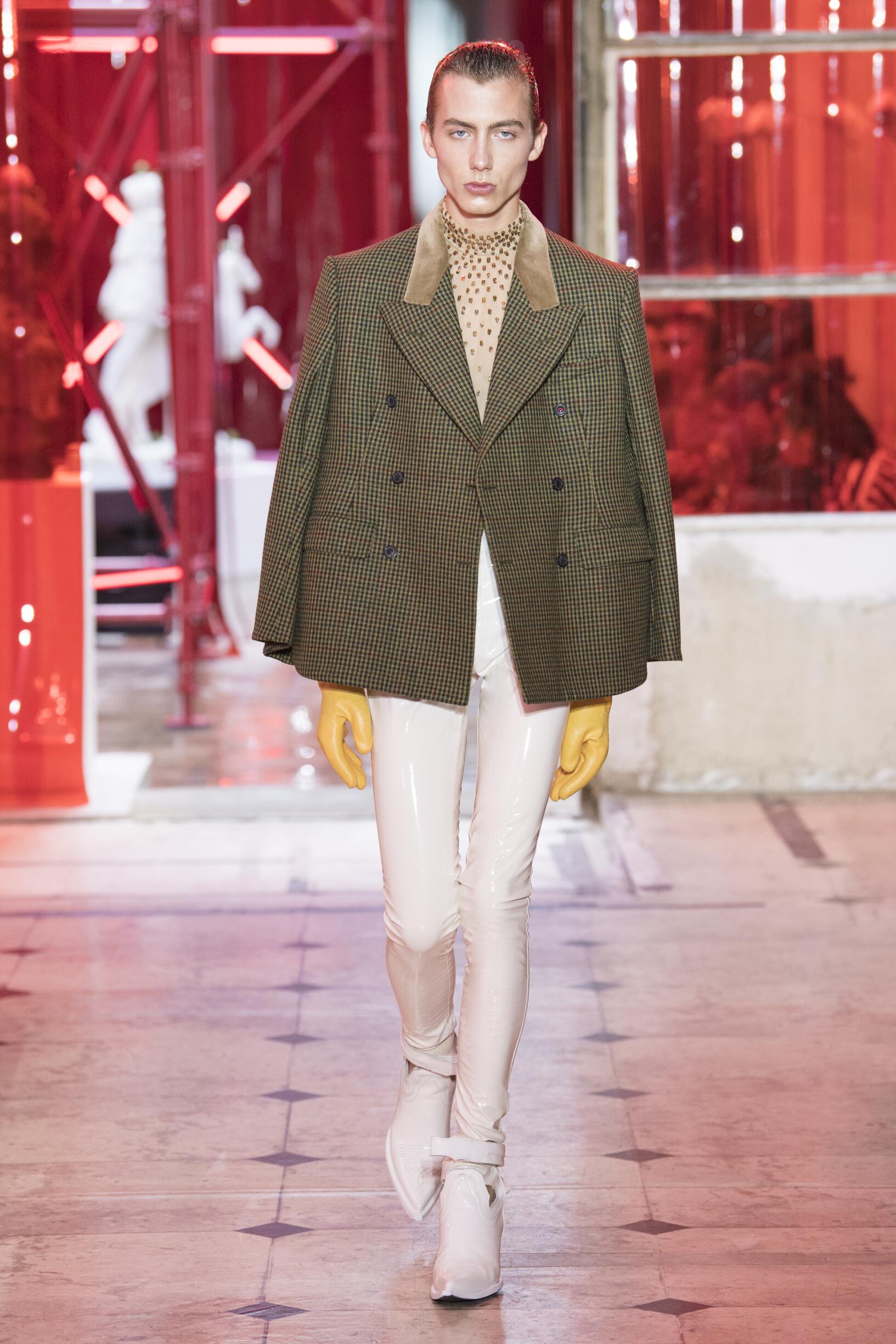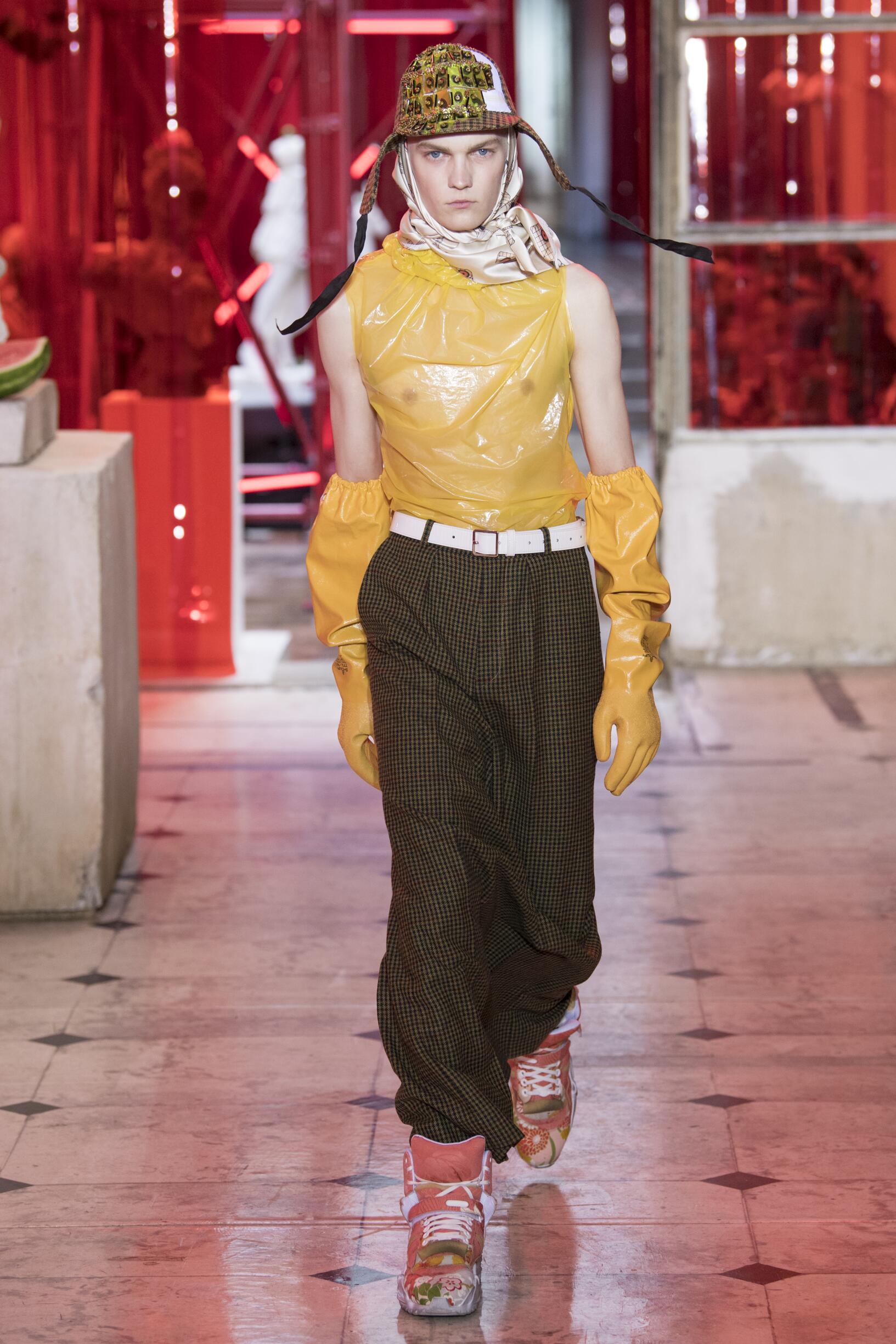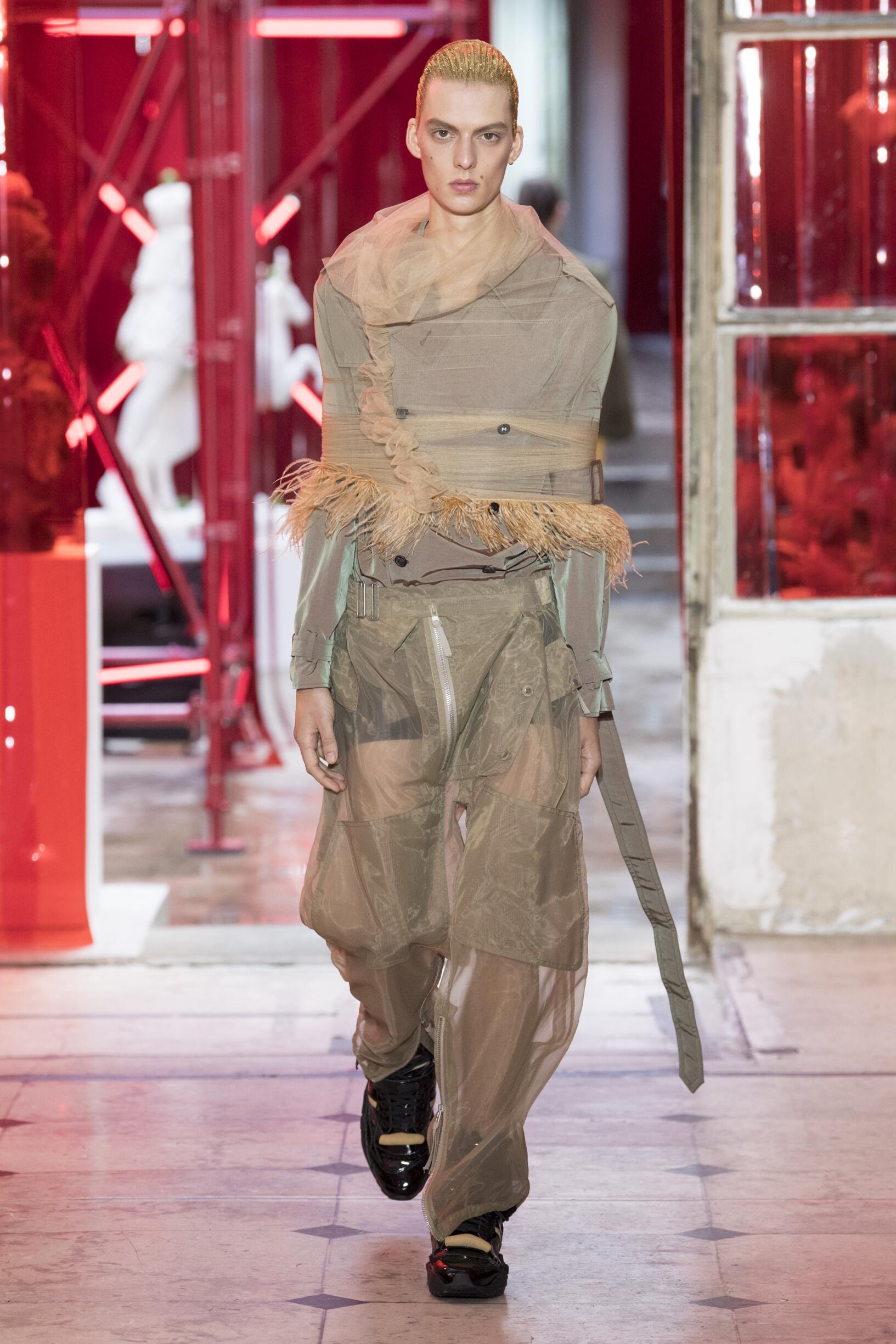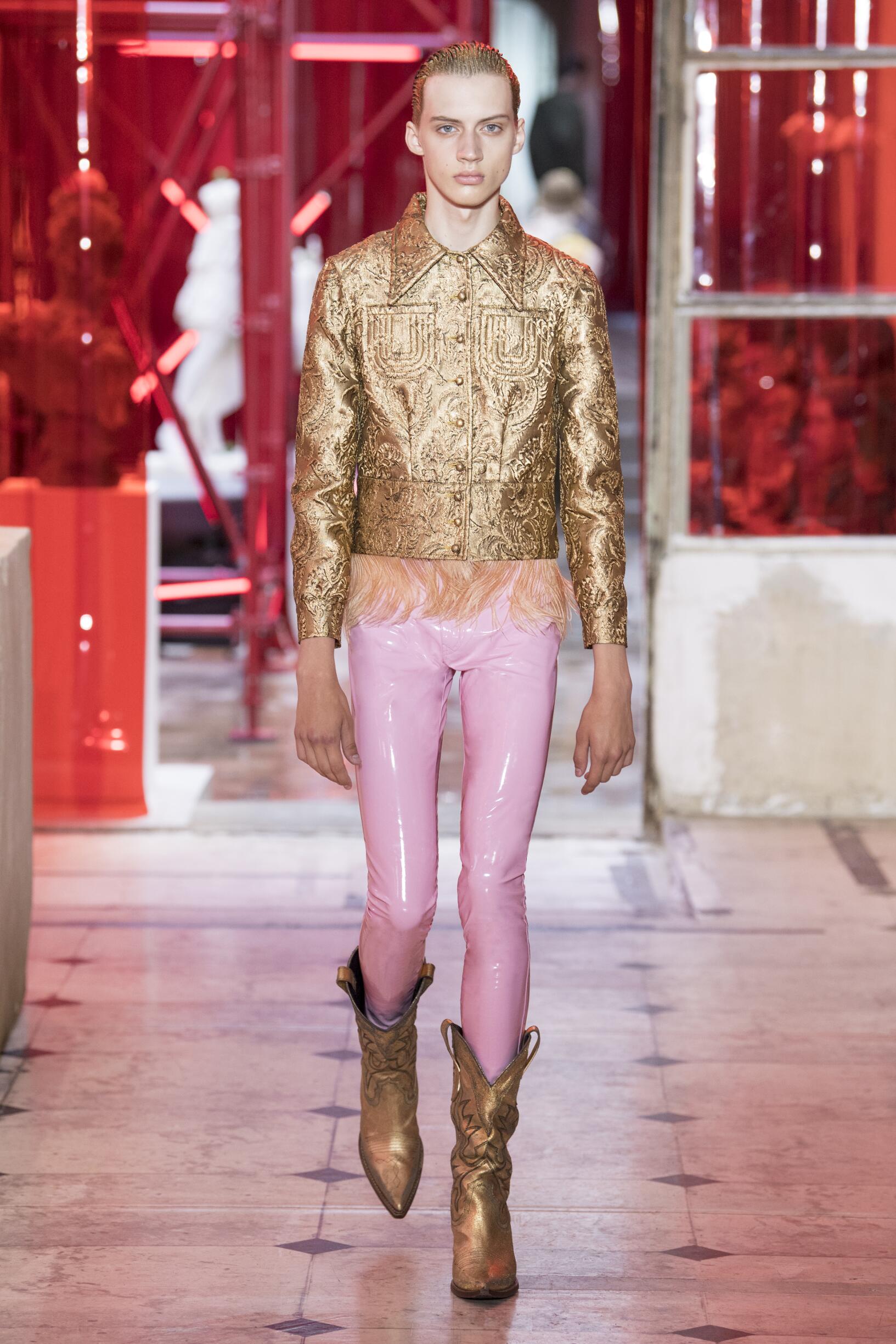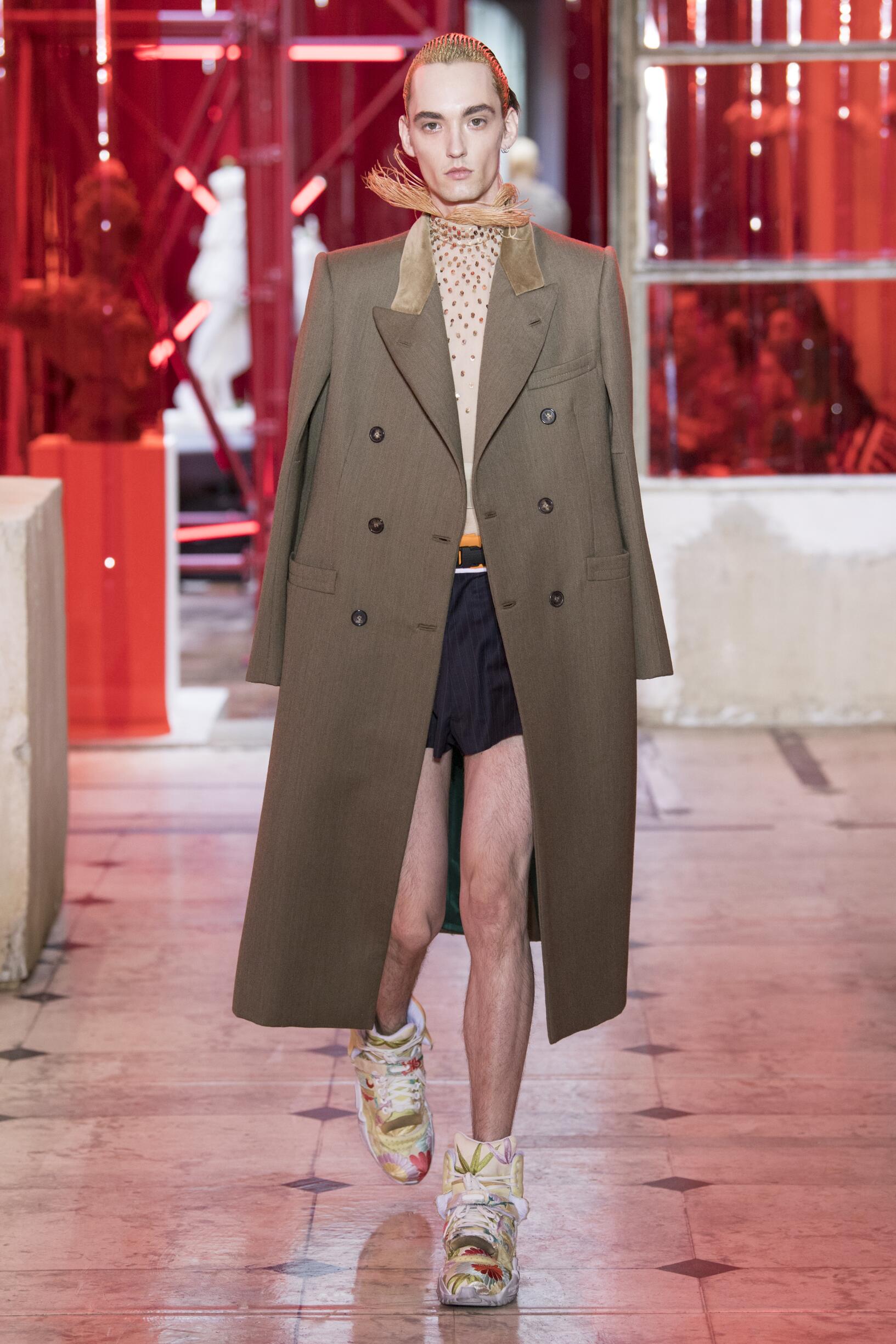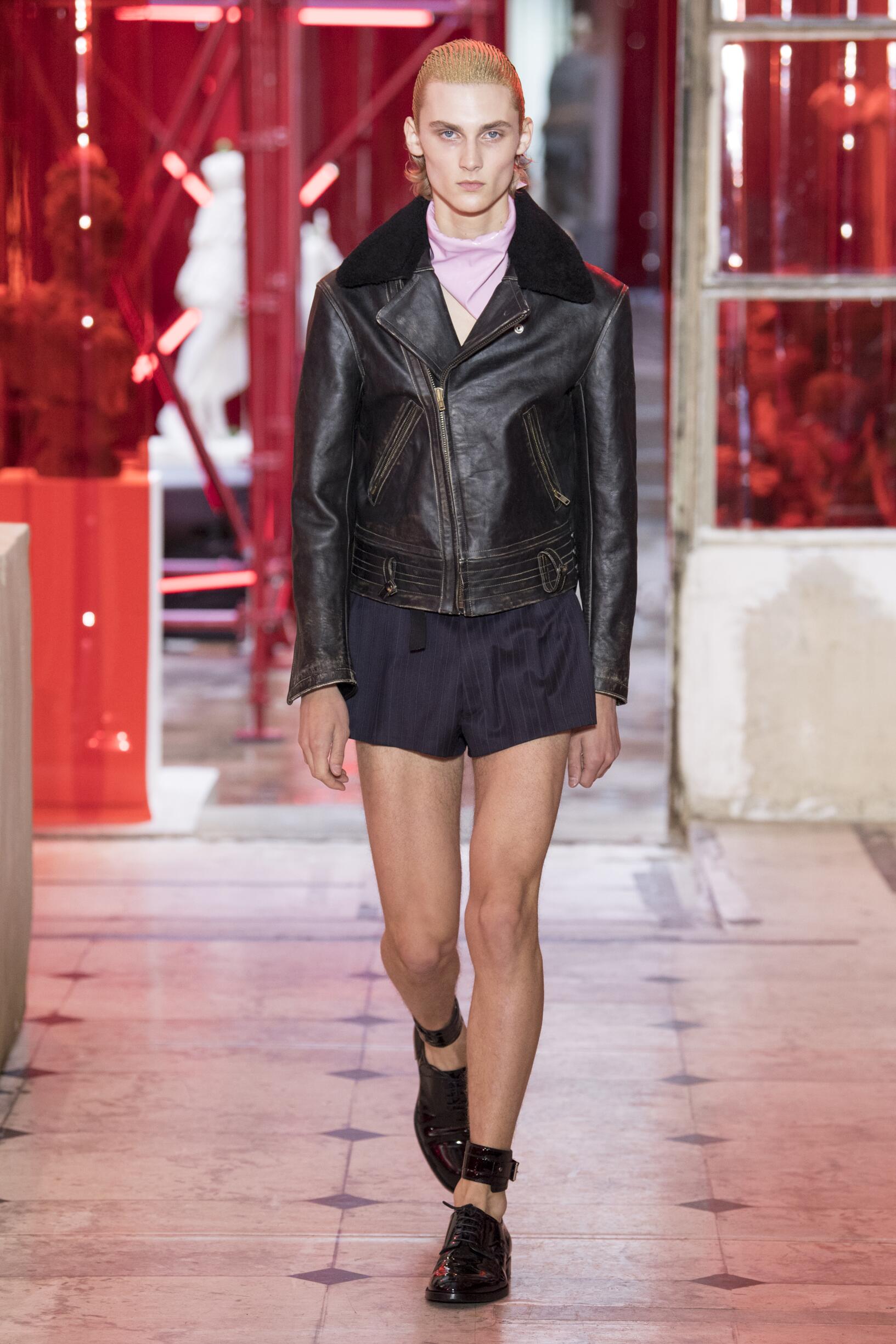MAISON MARGIELA SPRING SUMMER 2019 MEN’S COLLECTION – PARIS FASHION WEEK
Maison Margiela© Copyright 2018
‘Artisanal’ Men’s Collection
Reassessing the future of dressmaking in the men’s wardrobe, Maison Margiela presents its first full Artisanal menswear collection. The show signifies an unrestricted foray onto the territory of haute couture for men in a conversation with a new masculinity in motion. Opening the doors to the deft skills of creative director John Galliano and the 163 rue Saint-Maur ateliers, the presentation is staged as the house works in view. The collection is exclusively bespoke and will inform a men’s ready-to-wear line to be included in a co-ed Spring – Summer 2019 Défilé show in September.
Reflecting on the streetwear culture of the current menswear climate, John Galliano exercises his pyramidical approach to creation through an exploration of new values. It is an appreciation of the current evolution of male dress codes, and the desire to take it to unexplored places of craftsmanship for a young generation. The bias-cut – a technique native to the creative language of John Galliano – transforms traditional bespoke tailoring into a mercurial and hyper-modern take on suit-making. Executed in silks and tweeds, bias-cutting generates a harmonious exchange between fabric and body, expressed in a louche and liberating silhouette for an advancing male dress sense.
The intricacy, techniques and time inherent to haute couture are applied to traditional ideas of male dress in a transcendence of gender-specific uniforms. It is the experimental proposal of a reimagined sexuality, sensuality and individuality for a new mentality. Rooted in authenticity, garments informed by the wardrobes of formalwear and leisure pursuits undergo a process of repurposing. Original kimonos – some from the eighteenth century – are reconditioned into garments for the contemporary wardrobe. Corsetry, cape cuts in outerwear, and hand-embroidery in surface decoration nod at classic couture codes, whereas rubber and leather moulding reflect a less traditional approach to craftsmanship.
The Artisanal show is embedded in expert dressmaking and a new consideration of the tradition of haute couture. Drawing on terminology established in recent Artisanal proposals, notions of relaxed glamour, dressing in haste, appropriating the inappropriate, and dressing in reverse underpin the collection. House techniques such as anonymity of the lining, the memory of, and décortiqué, materialise throughout, honouring and honing the Artisanal identity of Maison Margiela.
‘Through the potential of Artisanal possibilities, conventional dress codes are broken down in a discovery of diverse individualities for a new age of self-expression.’ – Maison Margiela.
Materials
Authentic fabrications known from classic tailoring and haute couture form the foundation for the collection. Satin-back crêpe and tweed serve as canvases for bias-cutting in tailoring, while wool, twill and leather enter into outerwear. Drawing on the bespoke women’s wardrobe, textiles such as boucle, organza, chiffon, silk, jacquard and fine knit amplify the Artisanal volume, alongside the inevitable couture element of plume. They are contrasted by bold materials in the shape of vinyl, rubber, patent leather, and plastic. Original and antique kimonos are recycled and repurposed into new incarnations, bonded to their own lining.
Technique
The technique through which creative director John Galliano has historically expressed himself, bias- cutting is explored in menswear for a languid and dynamic approach to tailoring. Contrary to cutting straight-of-grain, bias-cutting materialises when the material is cut at an angle, allowing the natural elasticity in the fabric to hit the bias. The result is a virile, unparalleled sense of movement and a feeling of non-constriction. Recycled kimonos are deconstructed thread by thread, bonded to their own lining and transformed into new garments. Outerwear is cut like capes, evoking an unmistakable haute couture shape. Outdoor wardrobe staples are shrunken and transformed into shirts. Plume is encased in painted plastic. Hand-embroidery and hand-beading further cement the Artisanal prowess of the collection. Employing recently established house techniques, décortiqué appears when a garment or accessory is reduced to its structural core, while anonymity of the lining signifies the revelation of garment constructions traditionally concealed. The memory of illustrates the impression of a familiar motif in a garment. Dressing in haste is evoked by the gesticular encasing of outfits in fine silk knit tops, and dressing in reverse is the repurposing of garment layers traditionally assigned a certain function.
Palette
Black, white and off-white set the authentic tones for the collection. They come alive alongside red, pink and turquoise, backed up by motifs from kimonos and leopard, as well as vintage and animated prints. Finally, gold and silver serve as a manifestation of the high dressmaking embodied by the Artisanal collection.
Accessories
The techniques of haute couture inform hand-worked jewellery constructed from hand-made materials. Custom designed embroideries are created in a meeting between leisure pursuits and techno. Painstaking beadwork such as ladylike pearl necklaces, also native to haute couture, are embellished with blood drops made of tiny beads and resin paint. A décortiqué hat evokes codes from the hunting wardrobe, while high-shine leather belts with sportswear clasps echo an idea of the staple accessory. Launched last year, the Glam Slam bag appears colour-coded to the collection. Formal men’s shoes, Santiago boots and Tabi boots feature in décortiqué editions. The Artisanal men’s trainer makes its debut, in rubber, hand-embroidery and recycled original kimono fabric.


